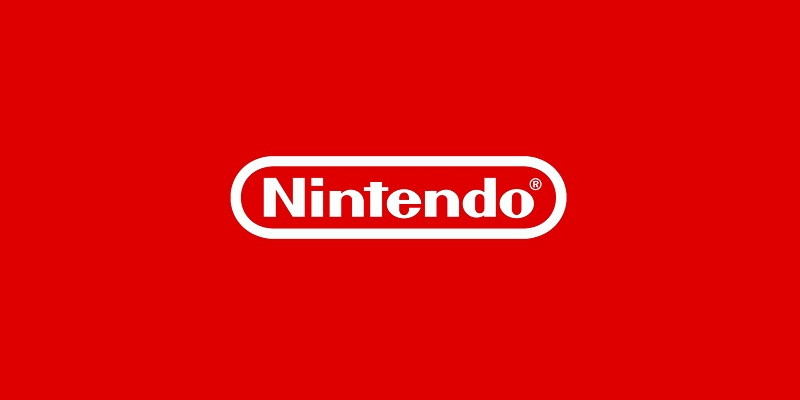Nintendo – 83rd Annual General Meeting of Shareholders: approval ratings, CSR report, message from the President, Q&A
On June 23rd, Nintendo held its 83rd Annual General Meeting of Shareholders. It took place at 10AM JST at the Kyoto International Exhibition Hall “Miyako Messe” (Exhibition Hall 3, Floor 3), instead of Nintendo’s headquarters.
Shareholders were invited to vote on several matters. The first one was the distribution of surplus: the company proposed a dividend of 123 Yen per share of common stock, for a total of 143,200,211,280 Yen. That proposal was approved almost unanimously:
- Votes in favour: 9,547,108 (99.3%) / Votes against: 4,771 / Did not vote: 2
Proposal 2 was the Election of Six Directors (excluding Directors who are Audit and Supervisory Committee Members):
- Shuntaro Furukawa
- Shigeru Miyamoto
- Shinya Takahashi
- Ko Shiota
- Satoru Shibata
- Chris Melandri
That proposal was approved. Here’s the approval ratings:
- Shuntaro Furukawa: 8,054,806 votes in favour (83.77%), 1,475,355 votes against, 25,513 did not vote
- Shigeru Miyamoto: 8,863,113 votes in favour (92.17%), 661,274 votes against, 31,297 did not vote
- Shinya Takahashi: 9,185,892 votes in favour (95.53%), 338,495 votes against, 31,297 did not vote
- Satoru Shibata: 9,185,948 votes in favour (95.53%), 338,439 votes against, 31,297 did not vote
- Ko Shiota: 9,185,887 votes in favour (95.53%), 338,500 votes against, 31,297 did not vote
- Chris Meledandri: 9,084,658 votes in favour (94.48%), 471,018 votes against, 5 did not vote
Their approval ratings last year were as follows:
- Shuntaro Furukawa: 815,297 votes in favour (88.32%), 105 175 votes against, 277 did not vote
- Shigeru Miyamoto: 851,470 votes in favour (92.24%), 66,931 votes against, 2,349 did not vote
- Shinya Takahashi: 909,765 votes in favour (98.56%), 8,637 votes against, 2,349 did note vote
- Ko Shiota: 909,761 votes in favour (98.56%), 8,641 votes against, 2,349 did note vote
- Satoru Shibata: 909,764 votes in favour (98.56%), 8,638 votes against, 2,349 did note vote
- Chris Meledandri: 916,185 votes in favour (99.25%), 4,296 votes against, 277 did not vote
This year, Nintendo only brought forward those two proposals (compared to 6 during the 82nd Annual General Meeting of Shareholders).
Next, Nintendo updates their CSR Report: you can find it on this page!
The new message from the president (Shuntaro Furukawa) is now live, but is virtually the same as last year’s (the only difference is one line about the new “environment” CSR priority, which isn’t really new anymore):
With our CSR goal of “putting smiles on the faces of everyone Nintendo touches,” we constantly examine the best ways for Nintendo to fulfill its social responsibilities through group-wide collaboration.
In consideration of the social conditions surrounding Nintendo, we set four CSR priority areas: “consumers,” “supply chain,” “employees” and “environment.” We continue to conduct our CSR activities based on this framework.
Our four priority areas encompass initiatives that include improving product quality and ensuring product safety, creating an environment where children can play with peace of mind, promoting CSR procurement through communication with our suppliers, building a work environment that fully enables our employees’ various capabilities and reducing the environmental impact of our products and business activities.
These initiatives are in line with Nintendo’s business goal of providing entertainment that anyone can enjoy regardless of age, gender, past experience and other diverse social backgrounds. We will faithfully continue our efforts, while appropriately disclosing the status of our CSR activities, being mindful of our four priority areas.
While cherishing the Nintendo DNA of originality, flexibility and sincerity that we have long fostered, we are committed to accomplishing our CSR goals alongside our aim to be a company that creates smiles for everyone through entertainment.
Finally, the usual Q&A session with investors. The official English translation can found on this page!
Question 1: It’s inconvenient that games become unusable when you transition from one game system to the next, like from Wii U to Nintendo Switch. I’d like to know your thoughts about making digital games purchased for Nintendo Switch available on the next-generation game console.
Question 2: A campaign celebrating the 40th anniversary of the Family Computer system (Famicom) was announced during the “Nintendo Direct 6.21.2023.” (The game system was released as Nintendo Entertainment System in markets outside Japan.) My father played Famicom, and I play Nintendo Switch. Nintendo is beloved by people across generations and borders, and I’d like to hear your thoughts on this strength.
Question 3: Wii U was launched around six years after Wii, and Super Famicom was launched around seven years after Famicom. Nintendo Switch has entered its seventh year, and I gather it has come to its final phase, so can you tell us about any specific measures for transitioning to the next generation game system?
Question 4: This May, technical difficulties affected an official game tournament for Pokémon Scarlet and Pokémon Violet hosted by The Pokémon Company. Based on that experience, I’d like to hear about your initiatives for esports going forward.
Question 5: Nintendo is a company with its roots in the manufacture and sale of hanafuda and other playing cards, but in the field of trading card games, nothing new has been released since Fire Emblem 0 (Cipher), for which support ended in 2022. What are your plans for card games going forward?
Question 6: Sales of Fire Emblem Engage, which was released on January 20, seem to be lower compared to Fire Emblem: Three Houses, especially outside of Japan. For that previous installment, it felt like the excitement was maintained by the release of Fire Emblem 0 (Cipher) and related events. But those kinds of measures were lacking for Fire Emblem Engage, so why don’t you consider more proactive measures?
Question 7: I visited SUPER NINTENDO WORLD at Universal Studios Japan the other day. It was a lot of fun, but the scale felt a little confined. Nintendo is a competitive company with its own characters, so how about expanding the theme parks to more locations in the future?
Question 8: This is regarding the “Inkling Boy” character who appeared in the Splatoon series. Splatoon 3, the latest title in the series, allows players to select their character’s appearance. However, I think designs resembling Inkling Boy were not featured as much as they should have been. Inkling Boy in the Splatoon series has many fans, so I would like this character to be featured more often.
Question 9: Are you thinking about providing a service for playing Nintendo 3DS software on Nintendo Switch in the future, similar to Nintendo 64 – Nintendo Switch Online?
Question 10: Nintendo enacted a 10-for-1 stock split last year, but 100 shares still cost over 600,000 yen. I feel that a further 2-for-1 or 3-for-1 stock split would make it easier for younger people to purchase your stock. If they become shareholders of Nintendo, I assume they would support Nintendo by purchasing games and merchandise. Please tell us about your stance on stock splits.
Question 11: Will it become possible to play software released for Nintendo GameCube or Wii U on Nintendo Switch?
Question 12: Nintendo has held Nintendo Game Seminar events (see Note) in the past, and released Game Builder Garage for Nintendo Switch. Please tell us more about these kinds of activities that can spark people’s interest in game development. In addition, I’d like to hear about how the developers who have joined us here today first got into game development.
Question 13: The Wii system is used in nursing homes, providing entertainment to the elderly. I can imagine Nintendo content being used in medical care and rehabilitation, but do you have any plans to implement these kinds of initiatives?
Question 14: Please tell us about Nintendo’s business model. I figure the source of Nintendo’s profit is selling hardware at affordable prices to increase the global install base, then selling a large volume of software that can be played on that hardware. Rather than releasing new hardware immediately, wouldn’t it be most effective for Nintendo’s business to focus on Nintendo Switch, which has already sold over 100 million units worldwide, and work to maximize sales of upcoming releases like Super Mario Bros. Wonder and Super Mario RPG? In addition, I assume you will launch the next-generation platform at some point, and when you do, I’d like to see you implement robust countermeasures against reselling so the console can reach the audience worldwide who wish to enjoy games.
Question 15: I’d like to hear the honest opinions of the developers about whether the hardware specifications of Nintendo Switch, now in its seventh year, are sufficient to bring all of their game ideas to fruition.
Question 16: This fiscal year, you announced an increase in employee base salary in Japan, and I think that is a very positive initiative in retaining talented employees. On the other hand, increasing the employee base salary decreases the resources for dividends, so I can imagine there was some sort of negative feedback from institutional investors. Please describe the reactions from institutional investors, employees, and other companies in the industry regarding this wage increase.
Question 17: Recently, the concept of the metaverse – where multiple unspecified users can play together in a shared virtual space – has emerged. What do you think about this?
Question 18: I believe there are many fans among Nintendo’s shareholders, so what do you think about introducing unique shareholder benefits that would make fans happy?

